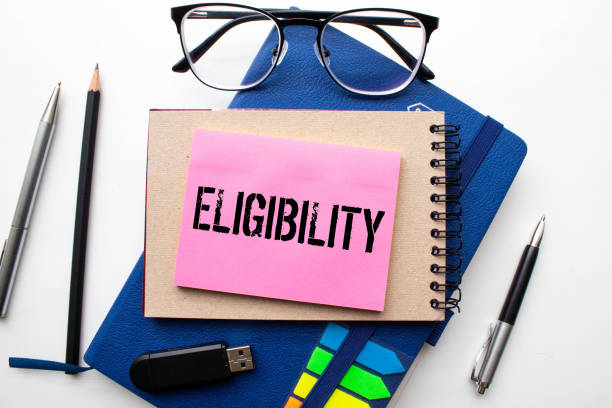
One can unequivocally argue that higher education assistance payment is a critical acquisition, but it does not come cheap especially for the families with a limited budget. The financial expenditures required for tuition, text materials, accommodation and other basic needs get higher in a prompt succession. Here is where EAPs can come through.
Education Assistance Payments seek to remove challenges that families and students targeting higher education assistance payment face. However, what are EAPs really and how can they best be utilized? This comprehensive article summarizes the important points of education assistance payments; their purposes, their functions, effective strategies around them, and more, as to allow you and your family to prepare for your education assistance payment future with confidence.
What is an EAP, or Education Assistance Payment?
Definition and Overview
EAP is an acronym for Education Assistance Payments. Education assistance payments are given to assist individuals who have enrolled in higher education assistance payment institutions. In most instances, these payments originate from official savings instruments such as Registered education assistance payment Savings Plan (RESP) and other similar plans.
EAPs include two primary elements of payment:
Government Grants: Contributions given to participants by government programs which depend on previous savings and contributions made to the programs
Earnings on Savings: Interest and other profit generated from investment of the contributions made in the savings plan.
EAPs are a concept that joins different components of a savings plan and the actual education assistance payment costs and makes education assistance payment affordable to the parents and their children who are pursuing it.
Eligibility

Who can be covered under EAPs? Usually, learners are supposed to fulfill certain conditions one of which is submission of evidence that they are registered in a recognized post-secondary institution for example the university, college or any other vocational school.
For Contributors: There are also certain requirements that parents, guardians or relations of the beneficiaries who opened the savings plan have to meet in regard to contribution.
For Students: Proof of enrollment is commonly a requirement and some programs have cut-off ages for access to funds.
Components of EAP
EAPs are not to be confused with loans or grants. Key components include government grants (for example the Canada education assistance payment Savings Grant in RESP accounts) and the earnings made on the contributions made into the savings plan. Such funds complement the amount of money a family is able to obtain to assist them in educating their child.
Benefits of Education Assistance Payments
1. Easing the Economic Stress
EAPs help to ease the economic burden on families by contributing towards payment of the tuition fees, books, housing and other costs of education assistance payment. Families do not need to put themselves in an expensive student loan situation, rather they can utilize the savings made over the years for the desired purpose.
EAPs bring about the realistic expectation that children are able to afford the education assistance payment they desire and therefore enable parents and guardians to plan ahead for their children’s academic future.
2. Promoting the Pursuit of Higher Education
EAPs also provide monetary relief that helps to make the students pursuing higher education assistance payment that may view financial struggle as the shunning factor.
Educators or professionals who have EAP’s are in a better position to concentrate on their studies rather than being stressed out financially.
3. Flexibility in Usage
One of the most significant merits of having EAPs is their versatility. The funds can be used for other needs apart from tuition including:
Books and other necessary study materials.
Accommodations like rooms in college or university hostels.
Travel and other educational activities including laboratory and technological related requirements.
In this way, the EAPs allow families to fully support the education of their student to the best of their capabilities.
How to Access Education Assistance Payments
1. Setting Up a Savings Plan
The first and the most crucial step is regarding the EAPs is about setting up a savings scheme that is linked with EAP such as explited currently in Canada a Registered education assistance payment Saving Plan. A few of the points to begin include:
Start Early: As with any future earning, the sooner one makes contributions, the more the returns from compound interest and investment income would be over time.
Use Government Matching Programs: Early contribution incorporating relevant government grant programs will maximize on further contributions thereby making great savings.
2. Requesting EAPs
When it comes to use the Funds, there are further procedures to be followed by the students or the families. They include:
Contact the Educational Institution’s Financial Institution where the RESP or the Saving Plan is being housed.
Proof of being in one of the qualifying instincts for which the loan or mortgage was sanctioned like the enrollment verification certificate.
Submit relevant forms necessary to bring about the payment.
3. Knowing Limits and Timelines
Be on the lookout for:
Bursars’ Limits: Some controlled programs, for example, may specify a specific amount pupils may take within a year/semester; money which may be co-mingled or above this threshold gets rolled over.
Deadlines: In some cases, such institutions stretch the effortless deadline if it is known that the units up for allocation will be utilized in some form after the beneficiary occasions a certain age or having completed a certain program level.
Obstacles and Considerations

While EAPs stand to be great resources in funding up a school, one of the important extremes of considerations that needs to be observed;
Myths and fallacies
Confusion with Other Assistance: Some FWP families may perceive EAPs as subsiding students, parents and schools as any loans and facilitates offered for students but they do differ due to the fact that they rarely do cover all the savings and grants.
Business Eligibility: It is able to each contributor or contributor student states make a mistake of some sort; and thus further accessing the available funds will be hindered.
Possible Weaknesses
Too Much Dependence on EAPs: Tzis will never be most families’ EAP estimator students. This means families should not forecast overly relying on EAPs and as such resources will run dry in such a situation.
Not Raised for Use: In the situation where the beneficiary ceases any forms of postgraduate education, such beneficiaries will have different measures on them regarding the unspent RESP funds. Possibly some tax ramifications will be imposed.
How to Apply EAPs Effectively
EAPs should be supplemented with scholarships, part-time jobs, or other financial aid relevant to the courses to meet the education requirements.
Always strive to have clear communication with your RESP provider or financial advisor in order to maximize savings and possibly avoid paying some fines for issues someone’s fault.
Always adhere to the timeframe of completing the tasks and arrange for documents needed to spare yourself the frays involved in finalising payment.
Tax Consequences Related to Education Assistance Payments
The very first point of emphasis while utilizing the EAP should definitely be on the tax impact since this will enable proper planning.
Taxable Portion of EAPs Which must be reported on a student’s tax return
The amount recognized by the beneficiary as EAPs will be considered as taxable income because of inclusion of government sponsored grants together with the earnings on the contributions saved. The taxable amount must be reported in the student’s tax return. The good thing is that students have low or no tax due to qualifications such as the tuition tax credit that helps in lowering their income level.
Contributions which are Nontaxable
The amount that the plan subscriber contributed when requesting for a distribution will be liable to tax after the withdrawal. These funds are considered non-taxable since they were contributed with after-tax dollars. Other cases are those where a subscriber or beneficiary claims against the funds and in relation to either claim is where the funds are paid out.
Strategies of Increasing Funds by Reducing Tax Burden
In order to minimize tax obligations when utilizing EAPs, families may consider the following:
Withdrawals made over a long period of time: Instead of making a large one time withdrawal in any one year, payments are made in several times to correspond the income and tax bracket of the student.
Student Credits should be used: When any EAPs have been made, credit payments pertaining to tuition, education and also textbook sums can be claimed in order to offset taxes accrued.
Coordinated Withdrawals: There is the opportune need to liaise with a financial specialist on the proper timing and the amounts of EAP withdrawals alongside other income sources available to the student such as part time jobs or scholarships.
So long as steady withdrawals are made and the entire tax structure concerning the EAPS is fully understood regarding how they are paid, families are able to keep their level of savings high while still operating within the legal framework.
Educational Trade-Offs for EAPs
However effective EAPs may be, they should not be the sole financial means considered for covering educational expenses and other costs because it is considered wise exploring other complementary financial solutions.
Scholarships and Grants
Scholarships and grants are a common source of funding as well besides EAPs. These are mostly based on merit or need and do not have any repayment capability. Many such possibilities are available to eligible students from various institutions, organizations or governments.
Student Loans
Student loans do have to be paid back however they can provide extra funds when families need to borrow more than what is available. Students can borrow through government agencies that sponsor loan programs with low rates and favorable terms.
Part-Time Work
It is possible to relieve some of these financial pressures and also teach students valuable skills of managing their time and finances by allowing the students in the first instance to undertake part time work. Incomes earned during part time activities can further be used along with EAPs for meeting educational needs.
Family Contributions and Savings

As for families who may not have opened EAP tied plans for savings, self-funded accounts or informal contributions may still provide a cushion for yourself when covering post secondary education expenses.
Setting aside an education savings account that is completely separate from the rest of the family’s funds can help families save up without having to rely on official programs like RESPs.
Using EAPs together with other forms of funding means that families can be well prepared to meet the varieties involved in the overall cost of higher education while also ensuring their children have a stable family secure and a bright future.
Own A Piece Of The Future Customers Of Your Student
Education Assistance Payments are among the best means through which the financial barrier associated with education can be mitigated, thus allowing for education for all. As a parent, guardian or a student, it is important to learn how EAPs work in order to be able to confidently proceed and brighten one’s academic future.
Do not wait until the last minute to make savings but try to use website sites to see whether there is a match to the government grant and talk to financial advisors on the better ways to use education assistance payments. Every effort made currently determines the success that will be witnessed in the years to come.
Conclusion
The above mentioned numbers and statistics also clearly indicate the beneficial effects of education assistance payments and their quick uptake among students and families who are faced with the dire costs that come with higher education midlife. Further, when coupled with such savings plans as RESP, the ypree education funding allows students to see an end to financial worries at the latter stages of their academic or learning period and concentrate more on academics and personal development aspect.
Grasping the operations of Education Assistance Programs (EAPs) and organizing oneself strategically is crucial in determining the extent of a family’s ability to pay for a quality education. Such payments not only make it easier to meet tuition and other related costs but also contribute to the realization of education assistance payment ambitions and successful long term outcomes.
In the first place, Education Assistance Payments should not be viewed simply as a handout, but rather as an opportunity to invest in the future. By leveraging these opportunities, we are equipping students with skills that will be useful to them in the dynamic world.
FAQS
1. What Happens if the Beneficiary Does Not Pursue Post-Secondary Education?
Where the beneficiary decides to forgo college or university, families still have ways of utilizing the savings they have in their RESP account. Although these accounts do have government grants, such grants may be subject to return, most of these contributions may be were withdrawable without imposing any peal. Furthermore, some investment earnings may be transferred into a Registered Retirement Savings Plan under certain conditions to allow families to redirect the resources.
2. Can EAPs Be Used for International Education?
Yes, the EAPs may also be used for studying in basically foreign accredited institutions. Nevertheless, it is important to ascertain whether the institution qualifies under the requirements set by the RESP provider or governing authority. Families may be required to provide supporting documents, such as proof of registration or accreditation details
3. Is There A Single Maximum Amount That Can Be Withdrawn?
Yes, the great majority of the established RESP program adheres to eligibility requirement or the government programs in respect of EAPs does provide maximum amounts. For instance, the provision of limits within the first thirteen weeks is the first thirteen weeks in which an individual has enrolled in a qualifying program. After this time, higher sums may be taken. One must be able to ask their resp provider as these would help the clients not to breach any of the restraining limits.
4. Do Unused Funds Expire?
The RELP contributions must be understood to have no expiry but there must be time limits within which government grants can be utilized as well as investment earning can take place. In fact, RESPs would have the opportunity of being held for up to around thirty six years thereby allowing sufficient time for users to strategize on how to employ the funds. Families should be aware of these timelines so as not to be disadvantaged with respect to any available monetary gain.
5. Are the Funds held by More than One Beneficiary at a Time?
In family RESP plans, multiple beneficiaries may access the same savings account. This helps in families with more than one child as investments can be pooled among siblings who qualify for the eligibility criteria of the EAPs.
While answering these common questions, families and students alike can channel their education assistance payment savings with confidence, while resources are directed towards efficient and effective use of funds.



